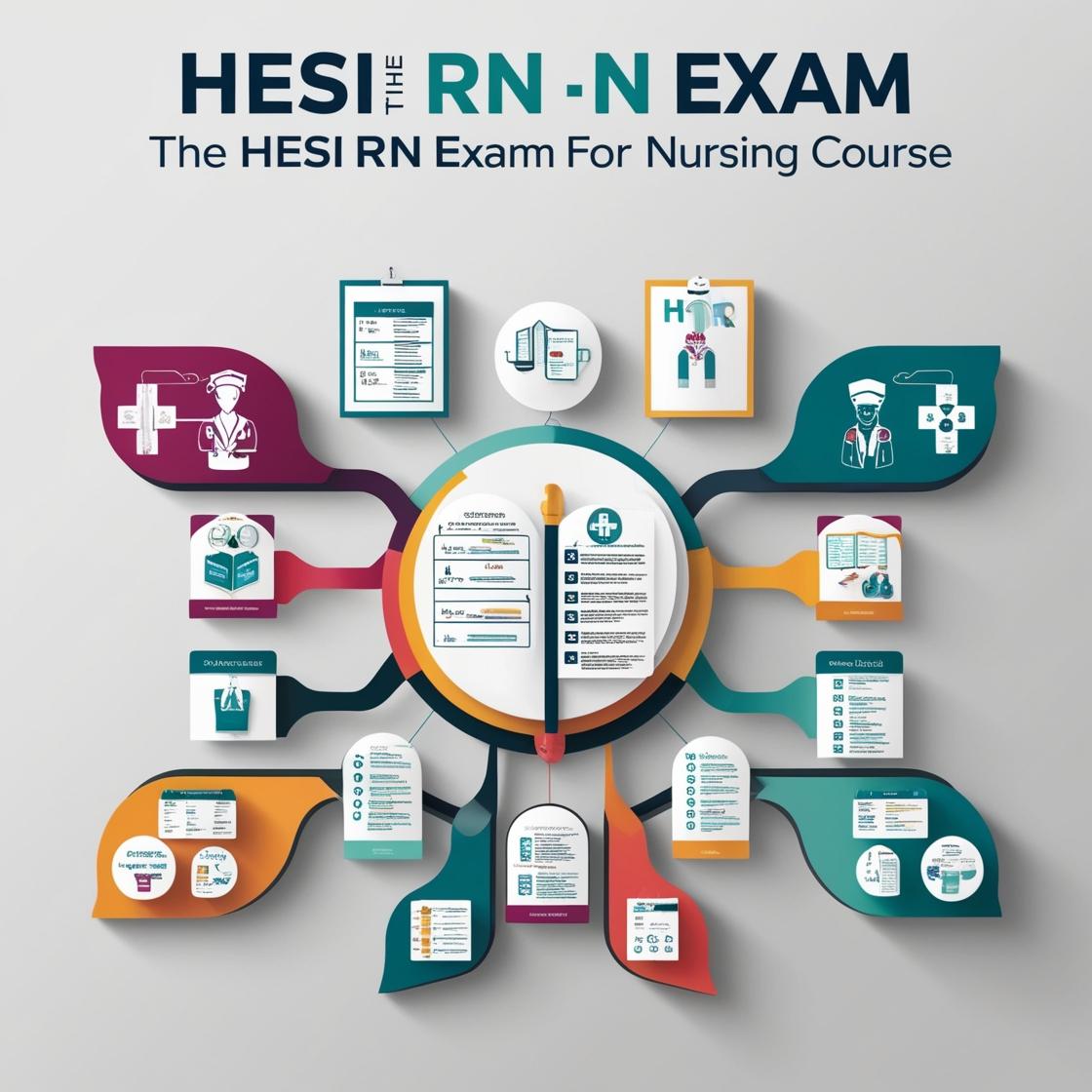HESI RN
Adult Health 2 HESI Quizlet
1. A patient who had a transverse colectomy for diverticulosis 18 hours ago has nasogastric suction and is complaining of anxiety and incisional pain. The patient’s respiratory rate is 32 breaths/minute and the arterial blood gases (ABGs) indicate respiratory alkalosis. Which action should the nurse take first?
- A. Discontinue the nasogastric suction.
- B. Give the patient the PRN IV morphine sulfate 4 mg.
- C. Notify the health care provider about the ABG results.
- D. Teach the patient how to take slow, deep breaths when anxious.
Correct answer: B
Rationale: The patient’s respiratory alkalosis is caused by the increased respiratory rate associated with pain and anxiety. The nurse’s first action should be to medicate the patient for pain. Although the nasogastric suction may contribute to the alkalosis, it is not appropriate to discontinue the tube when the patient needs gastric suction. The health care provider may be notified about the ABGs but is likely to instruct the nurse to medicate for pain. The patient will not be able to take slow, deep breaths when experiencing pain.
2. A patient is receiving a 3% saline continuous IV infusion for hyponatremia. Which assessment data will require the most rapid response by the nurse?
- A. The patient’s radial pulse is 105 beats/minute.
- B. There is sediment and blood in the patient’s urine.
- C. The blood pressure increases from 120/80 to 142/94.
- D. There are crackles audible throughout both lung fields.
Correct answer: D
Rationale: Crackles throughout both lungs suggest that the patient may be experiencing pulmonary edema, a life-threatening adverse effect of hypertonic solutions. The increased pulse rate and blood pressure and the presence of sediment and blood in the urine should also be reported, but they are not as immediately dangerous as the presence of fluid in the alveoli, which compromises gas exchange and can lead to respiratory failure.
3. A patient has a parenteral nutrition infusion of 25% dextrose. A student nurse asks the nurse why a peripherally inserted central catheter was inserted. Which response by the nurse is most appropriate?
- A. There is a decreased risk for infection when 25% dextrose is infused through a central line.
- B. The prescribed infusion can be given much more rapidly when the patient has a central line.
- C. The 25% dextrose is hypertonic and will be more rapidly diluted when given through a central line.
- D. The required blood glucose monitoring is more accurate when samples are obtained from a central line.
Correct answer: C
Rationale: The 25% dextrose solution is hypertonic. Shrinkage of red blood cells can occur when solutions with dextrose concentrations greater than 10% are administered IV. Blood glucose testing is not more accurate when samples are obtained from a central line. The infection risk is higher with a central catheter than with peripheral IV lines. Hypertonic or concentrated IV solutions are not given rapidly.
4. The nurse is teaching the parent of a child newly diagnosed with a latex allergy. Which information by the parents indicates a need for further teaching?
- A. Rubber-free toys, such as wooden building blocks, are good choices for the child.
- B. Only foil balloons will be used for the child's birthday party.
- C. A diet of healthy fruits, such as bananas and kiwis, is best for the child.
- D. An epinephrine auto-injector will be on hand to treat allergic reactions.
Correct answer: C
Rationale: The correct answer is C. Bananas and kiwis are foods that can cross-react with latex allergy, indicating that the parents need further teaching on managing latex allergies. Choices A, B, and D are correct as rubber-free toys, using foil balloons, and having an epinephrine auto-injector are appropriate measures to prevent and manage allergic reactions in a child with a latex allergy.
5. A patient is admitted to the emergency department with severe fatigue and confusion. Laboratory studies are done. Which laboratory value will require the most immediate action by the nurse?
- A. Arterial blood pH is 7.32.
- B. Serum calcium is 18 mg/dL.
- C. Serum potassium is 5.1 mEq/L
- D. Arterial oxygen saturation is 91%.
Correct answer: B
Rationale: The correct answer is B. A serum calcium level of 18 mg/dL is significantly elevated, posing a high risk for cardiac dysrhythmias. Immediate action is required to initiate cardiac monitoring and notify the healthcare provider. While the abnormalities in arterial blood pH, serum potassium, and arterial oxygen saturation also need attention, they are not as immediately life-threatening as the critically high serum calcium level. Therefore, addressing the serum calcium level takes precedence in this scenario.
Similar Questions

Access More Features
HESI RN Basic
$89/ 30 days
- 50,000 Questions with answers
- All HESI courses Coverage
- 30 days access @ $89
HESI RN Premium
$149.99/ 90 days
- 50,000 Questions with answers
- All HESI courses Coverage
- 30 days access @ $149.99
